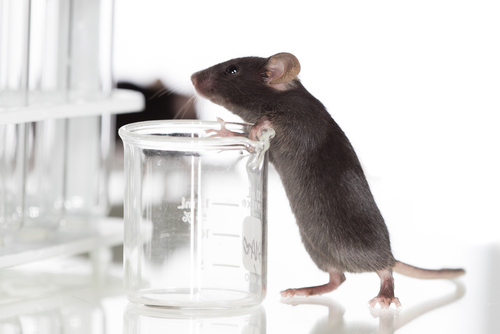Neutral Lipid-Enriched Diet Improves Nerve Protection in CMT Mouse Model

Mice carrying a mutation identical to that producing an early-onset, severe form of Charcot-Marie-Tooth (CMT) disease fed with a neutral lipid-enriched diet showed improved myelinization (the growth of the protective layer myelin around nerve fibers) and less peripheral nerve damage, a study found.
Such results indicate a potential benefit of dietary interventions in nerve diseases such as CMT.
The study, “A Neutral Lipid-Enriched Diet Improves Myelination and Alleviates Peripheral Nerve Pathology in Neuropathic Mice”, was published in the journal Experimental Neurology.
CMT is a group of disorders that affect peripheral nerves, the biological “wires” that transmit motor and sensory signals back and forth between the limbs (arms and legs) and the brain.
It can be caused by many different gene mutations, which alter proteins regulating the structure and function of either the peripheral nerve itself or the myelin sheath (the insulating layer that wraps around nerves to increase the speed of the electrical signals).
Myelin is rich in lipids, which account for 70% of its total dry weight. Although these lipids are normally synthesized by a special cell within the nerve itself known as the Schwann cell, it is known that dietary lipids transported in the blood can influence its composition.
To investigate whether a neutral lipid-enriched diet influenced myelinization and peripheral nerve disease in CMT, investigators relied on an animal model of the disease called trembler J (TrJ) mice, which carry a mutation in the PMP22 gene.
TrJ mice show pronounced demyelination, nerve atrophy, and aberrant proliferation of Schwann cells by 6 months of age. Macrophages (a type of immune cell) infiltrate the affected nerves to engulf and digest the myelin debris. These characteristics mimic an early-onset, severe form of CMT called CMT1E.
For six weeks, scientists fed one group of young, 3-week-old trembler j mice with control chow (CD), providing 18% of calories from fat, and another group with high-fat diet (HFD), providing 42% of calories from fat. Normal mice, which do not carry the mutation, were also subjected to the same interventions.
When the TrJ mice were 6 months old, researchers examined the peripheral nerves under a microscope, measured the levels of key cholesterol and triglyceride transport proteins, and determined the degree of aberrant Schwann cell proliferation and macrophage infiltration.
The six-week dietary intervention produced beneficial effects in TrJ mice, such as improved myelinization, especially of small caliber nerve fibers, with a notable increase in myelinated axons and in the average fiber diameter. In addition, Schwann cell aberrant proliferation was attenuated and there was less macrophage infiltration.
TrJ mice fed with control chow had elevated levels of key cholesterol and triglyceride transport proteins in their nerves, but these levels tended to normalize in mice fed with HFD.
The investigators also found that both normal and TrJ mice responded similarly to the six-week HFD, without significant differences in body or liver weight and without adverse effects. However, “mice displayed obvious lipid accumulation in response to the HFD intervention,” the authors wrote.
Fasting triglyceride levels were unaffected by the HFD and serum cholesterol levels increased by ~50% (mostly as HDL, or “good” cholesterol).
This study did not address whether the HFD modified the clinical signs of disease in neuropathic TrJ mice.
The team concluded: “These results demonstrate the beneficial influence of a short-term neutral lipid-enriched diet on neuropathy progression in young TrJ mice and support further work in investigating the potential benefits of dietary lipids on hereditary neuropathies.”
However, “additional studies are necessary to determine the optimal lipid-enriched diet, treatment time window and length to achieve long-lasting benefits in neuropathic nerves without harmful side effects. Nerve conduction and muscle strength studies will need to be included for comprehensive evaluation.”





